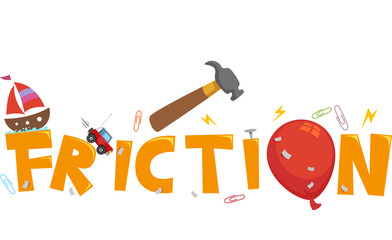“So you are saying I need to find the gear that allows me to work best?”
“Yes,” I responded. “Because just like a car or a bicycle, you’re not meant to stay in one gear all the time. The right gear helps you move forward with less resistance, less wasted energy, and a smoother ride. Too high a gear, and you’ll burn out quickly. Too low a gear, and you’ll spin your wheels without getting anywhere. Finding your gear is about working with your brain—not against it—so you can get where you want to go without unnecessary friction.”
As a cyclist, I learned the importance of finding the right gear. Too high, and your legs burn out too quickly. Too low, and you’re spinning furiously but going nowhere fast. The same principle applies to how we work, learn, and live: each of us has a “gear” where we operate most efficiently—without grinding, slipping, or creating unnecessary friction that slows us down.
What Does “Finding Your Gear” Mean?
Finding your gear means identifying the mental and physical state where you feel most productive, focused, and balanced. It’s not about pushing at your maximum speed all the time; that only leads to burnout. Instead, it’s about aligning effort with purpose. In the right gear, attention is focused, tasks flow more smoothly, decisions are clearer, and energy is used efficiently.
For some of us, this gear shows up in the quiet hours of early morning, when much of the world is still asleep. For others, it’s in structured interactions with teammates, or during bursts of focused solitude. Recognizing your gear is about paying attention to when you feel most “in the zone” and building more of your day around those times and situations.
Recognizing When It’s Time to Shift
Just like a cyclist climbs a hill by shifting into an easier gear, or a truck downshifts to slow down on a steep grade, we need to know when to shift. Signs that you need to adjust include:
- Grinding and Friction: Work feels forced, progress stalls, and even small tasks take an inordinate amount of energy.
- Overheating: Mental fatigue, irritability, or trouble focusing are signals that you’ve been in too high a gear for too long.
- Coasting: Too low a gear may feel comfortable, but it offers little forward progress. Boredom, disengagement, or procrastination can begin to creep in.
Learning to notice these signs early helps you adapt before stress or inefficiency sets in.
Strategies for Shifting Between Gears
Just as gears allow vehicles to handle different terrains, we can use strategies to adjust how we’re working:
- Set Micro-Goals – Break a large task into smaller, doable steps. This acts like shifting to an easier gear when climbing uphill, helping you maintain momentum without burning out.
- Use Rhythms and Routines – Build a cadence that matches your natural energy cycles. Schedule high-focus work for your most productive hours and lighter or creative tasks for when energy is lower.
- Pause and Reset – Downshift by taking short breaks. A walk, deep breathing, or simply stepping away for a few minutes restores energy and prevents stalling.
- Switch Contexts Intentionally – Sometimes shifting gears means changing environments: moving from your desk to a café, or from writing to brainstorming. A change of scenery can reduce friction.
- Know Your “Cruising Gear” – Identify habits and supports that help you stay steady, such as physical activity before sitting down to work, maintaining hydration, listening to music, or using a dedicated workspace. These anchor you when conditions get unpredictable.
Why Shifting Gears After a Concussion Is Different
After a concussion, your gears may not work the way they used to, and this can be a tough adjustment. Mental stamina, processing speed, and attention can be reduced, making it harder to stay in a higher gear for long periods. If you try to force your old pace, you risk stalling out with fatigue, headaches, or brain fog.
This is why readjusting your gears is critical during recovery:
- Smaller gears first – Tasks that once felt effortless may now require more effort. Breaking things down and slowing the pace reduces friction and allows healing to occur.
- Frequent downshifts – Shorter work periods and more frequent breaks give your brain the rest it needs, preventing overload.
- Listening to the engine – Symptoms are your dashboard warning lights. Headaches, dizziness, or difficulty concentrating are cues that it’s time to shift into a lower gear.
- Gradual rebuild – Just as a cyclist slowly reconditions after an injury, reintroducing higher gears in recovery must be done with patience and awareness. Recovery is often compared to a marathon, not a sprint.
The goal is not to return instantly to your old performance but to create a new balance, a gear system that respects your current abilities while still moving you forward.
Managing Focus and Energy with ADHD
For individuals with ADHD, the challenge is about regulating focus and energy throughout the day. ADHD brains often operate at extremes: hyperfocused in one moment, easily distracted the next. This makes “gear shifting” a daily necessity.
- Hyperfocus can be like getting stuck in a high gear—you’re moving fast, but at the risk of missing other important turns.
- Distraction is like being stuck in too low a gear—you’re spinning but not gaining momentum.
Finding your gear with ADHD means building awareness of these patterns and learning strategies to create smoother transitions:
- Timers and external cues to remind you when it’s time to shift.
- Energy mapping—noticing when focus is strongest and scheduling demanding tasks in those windows.
- Movement breaks to reset attention and prevent mental stalls.
- Clear routines that reduce decision fatigue and keep you cruising in the right gear.
The importance of this skill cannot be overstated: when ADHD brains learn to shift gears smoothly, the result is less wasted energy, improved productivity, and a greater sense of control.
The Payoff of Smooth Shifting
When you know your gears and can monitor your personal dashboard, you can transition between gears smoothly and waste less energy grinding through resistance. Instead, you will move forward with balance, control, and confidence. You become more resilient in the face of challenges, better able to climb the steep hills of demanding projects, and more graceful in coasting through easier terrain.
In the end, finding your gear isn’t about speed alone; it’s about sustainability. Are you able to be as productive today as you were yesterday and can be tomorrow? Whether you’re managing daily life, recovering from a concussion, or navigating the focus and energy challenges of ADHD, the ability to shift as needed allows you to go the distance with less friction and more flow.






